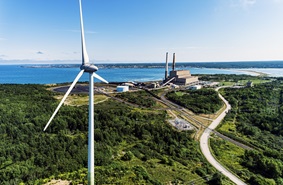Will SVB’s Failure Create Headwinds in Clean Technology?
SVB's failure could create a domino effect in the IT and banking sectors, whereby the default of one company would trigger the default of another one across sectors, and so on. In this article, we explore that possibility for the cleantech sector.
A New Tool at the Table: Understanding Low Carbon Transition Risk By Industry and How Companies Are Managing It
Discover how leading companies are managing their low carbon transition risks. Using data from the Low Carbon Transition Ratings, we identify the industries with a large portion of the companies with strong management of transition issues and examine the factors contributing to their strong management scores.
Biodiversity For Financial Institutions: Making the LEAP to Better Decision Making and Stewardship
Amid growing pressure to incorporate biodiversity into investment processes, we will outline how financial institutions can perform biodiversity assessments to make meaningful decision, contribute to biodiversity preservation and be accountable to regulators.
Inconsistent Definition of ‘Sustainable Investments’ Across EU Regulations Could Cause (Unintentional) Greenwashing
The absence of clear parameters to support the regulatory definition of sustainable investments has pushed market participants to make judgment calls leading to diverging investor approaches.
EU's Iterative Approach to Sustainable Finance Regulations Isn't Perfect, But It's a Good Start
The EU Action Plan for Sustainable Finance has kept the European investment market busy over the past year. In this blog post, we highlight the merits that we see in the EU regulatory package. While not perfect, the regulation is a good start.
The Role of Sustainability-Linked Financial Instruments in Heavy Industry Decarbonization
With the effects of climate change looming, governments and organizations of all stripes need to work with carbon-intensive industries and invite them to participate in global decarbonization efforts. This can, in part, be achieved through sustainability-linked instruments.
Carbon Emissions Data for Investors: Closing the Reporting Gap and Future-Proofing Estimations
Despite improvements in the quality and quantity of carbon emissions reporting from companies, significant gaps remain. Discover the current state of emissions disclosures, learn the advantages and disadvantages of widely used estimation models, and discover the approach underpinning Sustainalytics' Carbon Emissions Data product.
Sustainability-Linked Financial Instruments: Creating Targets and Measuring Your Company's Performance
Sustainability-linked bonds and loans have begun to gain more attention. This blog post takes a closer look at key performance indicators (KPIs) and sustainable performance targets (SPTs) that must be kept in mind while opting for these instruments.
Investors Seek Meaningful Scope 3 Emissions Targets to Evaluate Climate Transition Plans
Climate concerns continued to dominate proxy voting in the 2022 proxy season. With more clarity on sectoral commitments required to achieve the global net zero goal, shareholders’ requests have become noticeably more specific. A larger number of resolutions asked companies to adopt and report on emissions reduction targets and transition plans that reference the latest forward-looking guidance.
Post-COP15 Outlook: Evolving Investor Responsibilities in Biodiversity
Awaiting COP15’s Global Biodiversity Framework negotiation outcomes, financial market participants could face new regulatory pressure sooner than expected to integrate biodiversity assessment into their investment, decision-making processes.













.png?sfvrsn=2eecdd86_0)






